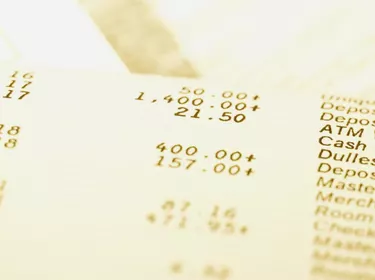
The balance sheet is one of three important financial statements intended to give investors a window into company's financial condition at a specific point in time. A strong balance sheet usually means high qualify assets, including a strong cash position, very little or no debt and a high amount of shareholder's equity. All else being equal, a company with a solid balance sheet can endure tough economic cycles compared to one with a weaker financial footing.
Balance Sheet
Video of the Day
Together with the income and cash flow statements, the balance sheet provides investors with an overview of the company's financial condition. The balance sheet in particular shows what the company owns in terms of its assets and what it owes. Together with accompanying footnotes, the balance sheet informs an investor about the company's assets and liabilities at a specific point in time. Essentially, the balance sheet shows the company's net worth after taking its assets less its liabilities.
Video of the Day
Assets
The balance sheet separates assets into two categories: short term and long term assets. Short term assets include cash, inventory and accounts receivable. Besides plant and equipment, long term assets include real estate holdings, patents and goodwill. Looking at a balance sheet an investor can quickly determine how much cash a company has which is particularly important for funding operations and working capital. The balance sheet discloses a company's hard assets such as plant and equipment and management's assessment of the useful life of its assets based on the rate of depreciation.
Liabilities
The liability side of balance sheets discloses how much a company owes. For example, a company with higher levels of long term debt is at greater financial risk versus one with little or no debt. Short term debt on the balance sheet refers to debt due in one year or less. A prime example of short term debt is accounts payable. A high level of accounts payable suggests heavy use of vendor financing to fund operations, which may be an indication of cash flow issues.
Equity
The shareholder's equity portion of the balance sheet discloses how much money investors put into the company. Equity includes par value of the company's common stock, usually a nominal per share value such as $1 and additional paid-in-capital which is the amount of money shareholders put into the company above par value. Retained earnings are the portion of a company's net income it decides to keep rather than pay out as dividends. A conservative company usually maintains a high level of retained earnings to reinvest in the business, pay down debt or return to shore up its balance sheet in case of economic uncertainty.
Ratios
Financial statement analysis examines various components of company's financial statements to identify existing relationships and what they mean for the financial condition of the company. For example, using a company's balance sheet, an investor can quickly calculate the ratio of current assets to current liabilities. A company with a higher current ratio is in better financial position than one with a ratio of less than 1. Likewise, the debt-to-equity ratio compares the company's debt level to shareholder's equity. A higher amount of debt to equity places a heavy financial burden on the company and its shareholders.